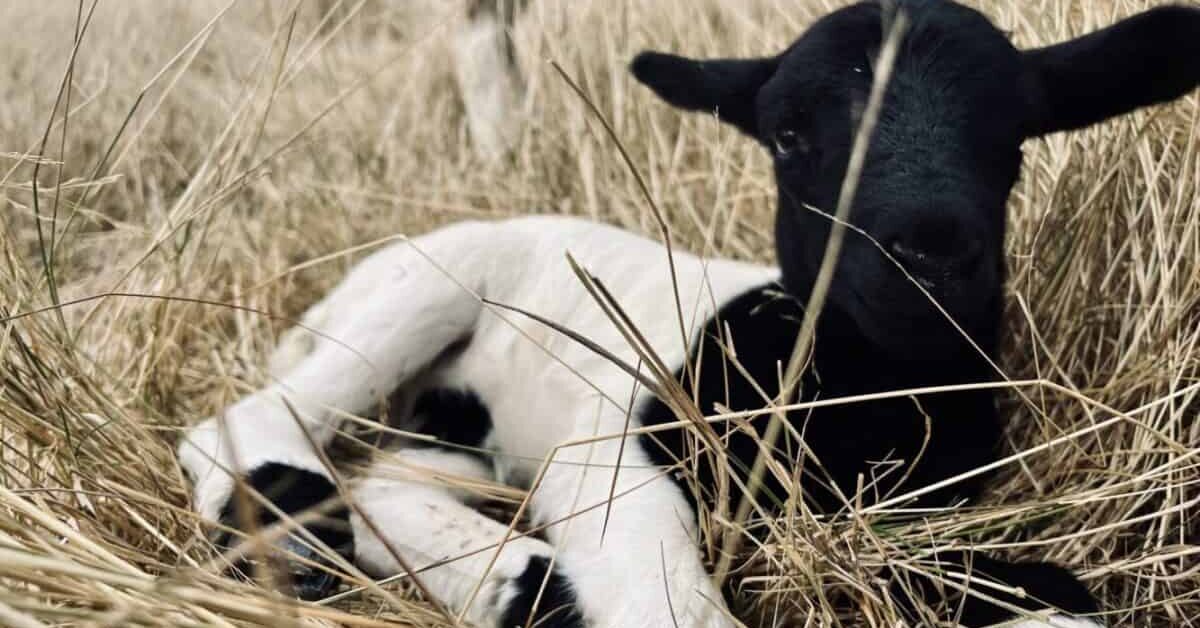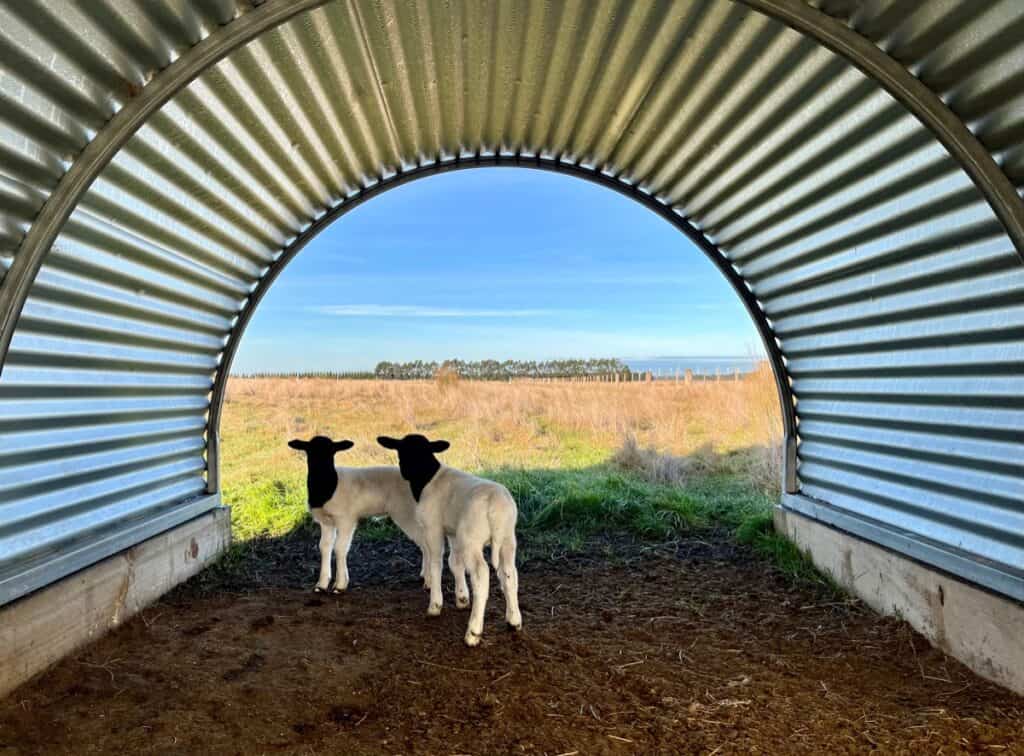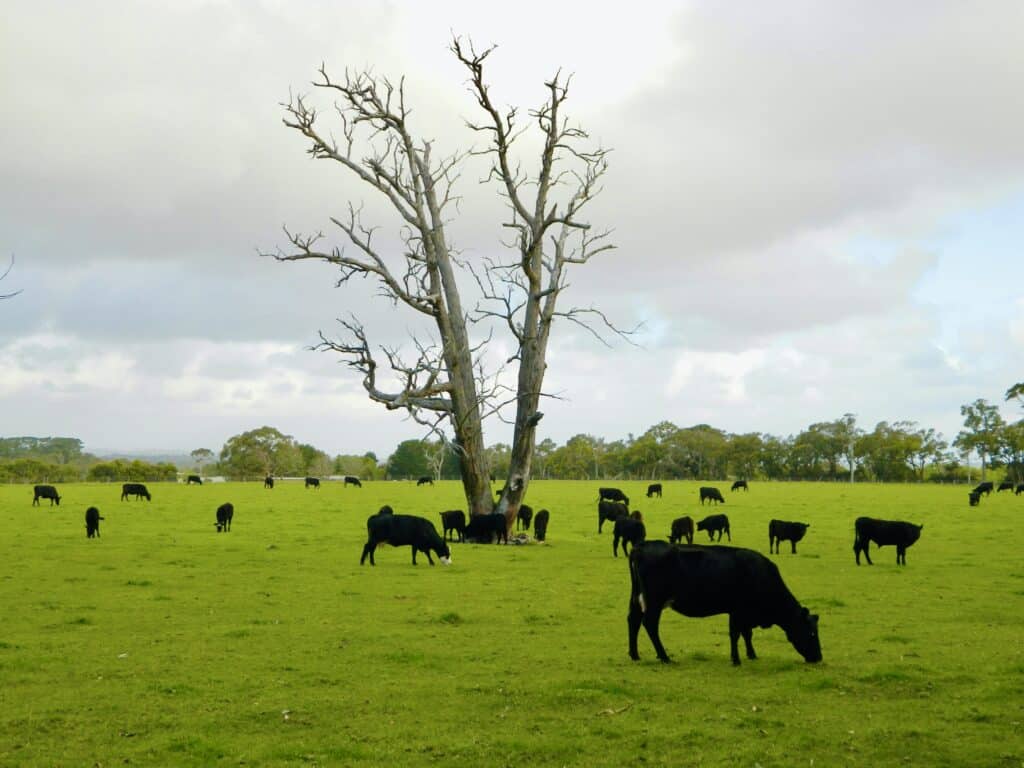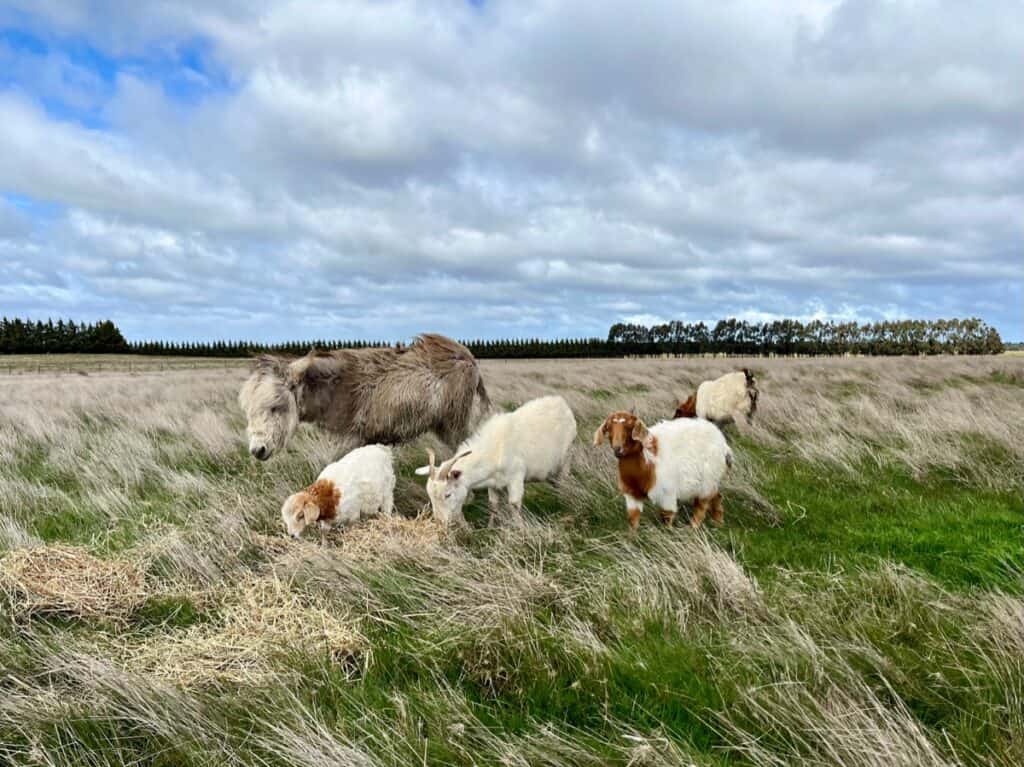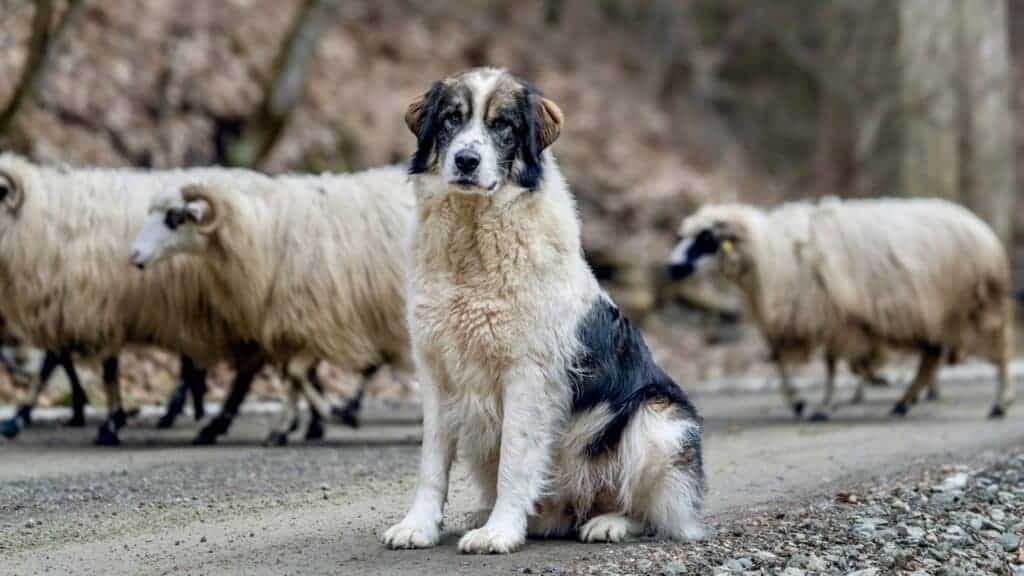Lambing can be a joyous and somewhat stressful time on the farm. Organisation is the key to making the lambing season as smooth as possible and my essential lambing kit (supplies you must keep on hand) is always stocked and ready to go.
Lambing Season
Typically lambing season takes place over winter. Not an ideal time to have skinny newborn lambs out in the elements, however, shepherds have little choice. Seasonal ewe fertility cycle dictates the most opportune time for joining (letting the rams run with the ewes for mating).
Ewe fertility begins to increase after the longest day of the year (summer solstice) which takes place end of December in the southern hemisphere or June in the northern hemisphere. From this point ewe fertility increases until reaching its peak in Autumn (March to May in the south and September to November in the north) before dropping off to very low levels through spring and early summer.
It is important to note, fertility peaks and troughs do change across sheep breeds, with breeds such as Dorpers and Merinos showing a less drastic decline in fertility over spring than other breeds like the Border Leicester.
Shepherds tend to join ewes and rams through the end of summer early autumn. This makes the most of the natural fertility cycle; results in lambs being born over winter and weaned coming into spring when pasture growth is at its best.
At Silverholme we join our ewes through May and June, scheduling lambing early Spring when weather starts to improve. Winters here are particularly harsh, being very wet and windy, and lambing predominantly takes place outside with a few available shelters. Later lambing makes for an easier season on us, our ewes and the newborn lambs.
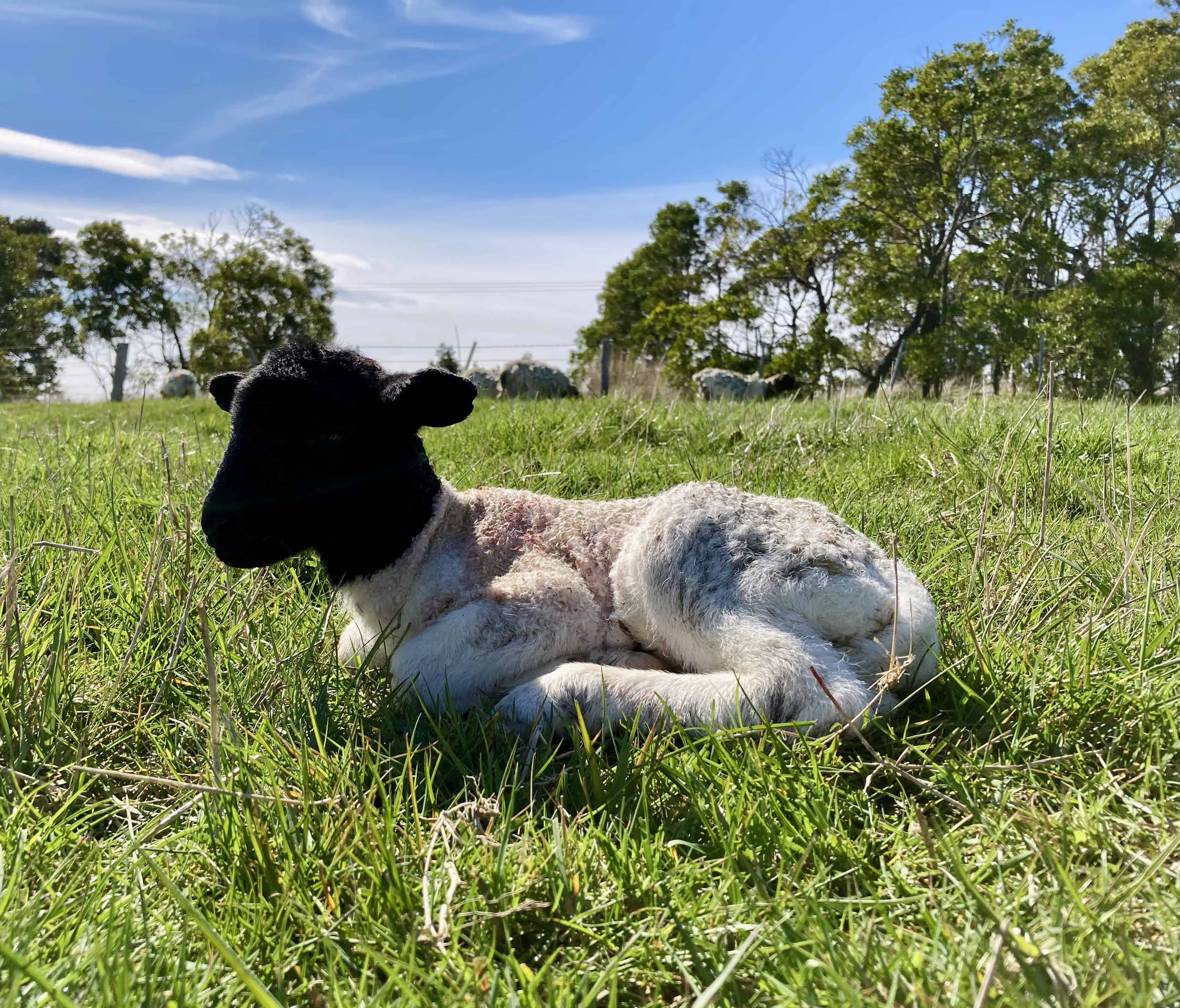
Lambing Kit Essentials
My lambing kit is packed and ready well before the first lamb drops (born). I have a lightweight weatherproof bucket (sometimes multiple if I’m lambing across more than one paddock) to store everything I need close at hand. It stays at the gate to the paddock over the entirety of the season.
Studies into lambing have shown on average 15% of all births require assistance. Dystocia, when the lamb is too big for the birth canal, is the leading reason for ewe’s needing assistance at lambing. An unfortunate result of decades of selective breeding to increase the size of lambs at birth.
The experience at Silverholme has confirmed these findings with the number of assisted births season to season averaging 16%. I am actively breeding my ewes with a smaller ram to combat the occurrences of dystocia in my flock. A larger and faster growing lamb at birth does not warrant the increased potential of a traumatic labour and birth for the ewe and lamb or fatalities.
The reality of raising lamb means you’re highly likely to need to intervene during labour at some point. These 10 essential items for your lambing kit will make this easier on yourself, the ewe and the lamb.
10 Essential Items for your Lambing Kit:
1. Gloves
Two styles of gloves should be kept on hand during lambing.
The first style is a wrist length examination glove. Making sure they fit snuggly so you have optimal use of your hands and avoid the gloves sliding off.
The second is a shoulder length glove with over head strap. Sometimes lambs get themselves in all types of strange positions in the womb and delivery may be impossible for the ewe without the lamb being moved. The shoulder length gloves make this a more bearable experience for yourself and the ewe. The glove is secured over your head so you won’t have to worry about it sliding off.
2. Lubricant
Bulk packs of lubricant that are reasonably priced can be purchased from most online VET or farms supplies stores. I store a smaller quantity in my lambing essentials kit in repurposed mayonnaise squeeze bottles. It makes it far easier in situations where you don’t have an extra hand to assist.
You should always use lubricant when dealing with internal concerns for the comfort of the ewe.
3. Topical Iodine 10%
Iodine is one of the most important medical supplies on the farm. In terms of lambing the most common use will be as an antiseptic to clean the newborns umbilical cord. The umbilical cord is the most immediate concern of infection in newborn lambs and should be cleaned within hours of birth.
Get a screw cap bottle of Iodine rather than a spray bottle for this situation. It provides better coverage and makes for an easy job when holding the lamb and inverting the bottle over the umbilical cord.
4. Scissors
A pair of small and very sharp pair of scissors should be stocked in case the umbilical cord needs to be snipped shorter after birth.
Umbilical cords that are too long have a higher chance of infection and the additional threat of being caught underfoot, adding pressure and potentially causing damage to the newborns naval. Scissors should be clean and disinfected for this purpose.
5. Towels
Immediately after birth, ewe’s will generally start to clean and dry their lamb. On occasion this isn’t the case and you may have to intervene; drying the lamb before it gets cold.
This situation is most likely to occur if:
- it’s the ewes first time lambing
- the labour has been difficult or traumatic
- the ewe is carrying twins and the second birth has started
- the weather is poor and the ewe’s attempts at drying the lamb are futile
It is important that you don’t rush into drying lambs in unwarranted situations. Ewe’s identify their newborns through scent; by towel drying a lamb the scent can be altered to the point that the ewe won’t recognise the lamb as hers. As a result the ewe may reject and refuse to feed the lamb.
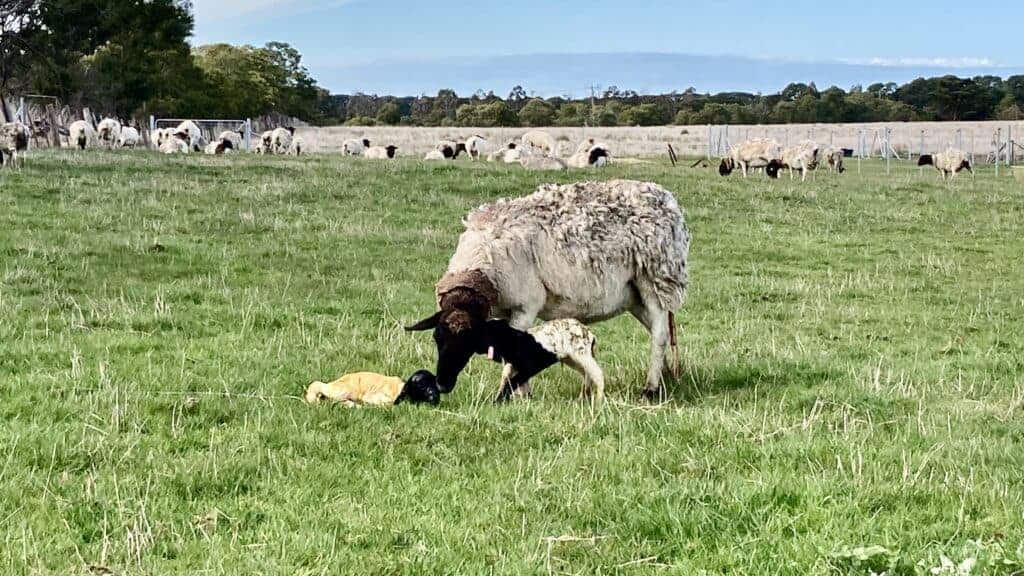
6. Powdered Colostrum
Colostrum is the first form of milk produced by the ewe after giving birth. It is nutrient dense and high in antibodies. Colostrum is the only feed available to a newborn lamb over their initial days of life and important for building their immune system.
If a ewe hasn’t started producing milk, has rejected her lamb or has succumb during labour, it is important that the lamb be fed substitute colostrum for the first few days after birth.
7. Powdered Milk
A lamb without a ewe to feed from will require substitute milk, generally in the form of powdered milk replacer. Lamb specific powdered milk can be purchased from most agricultural stores and online. It’s generally sold in 20kg bags and comes with a hefty price tag. Powdered full cream milk is a potential substitute.
8. Bottles and Teats
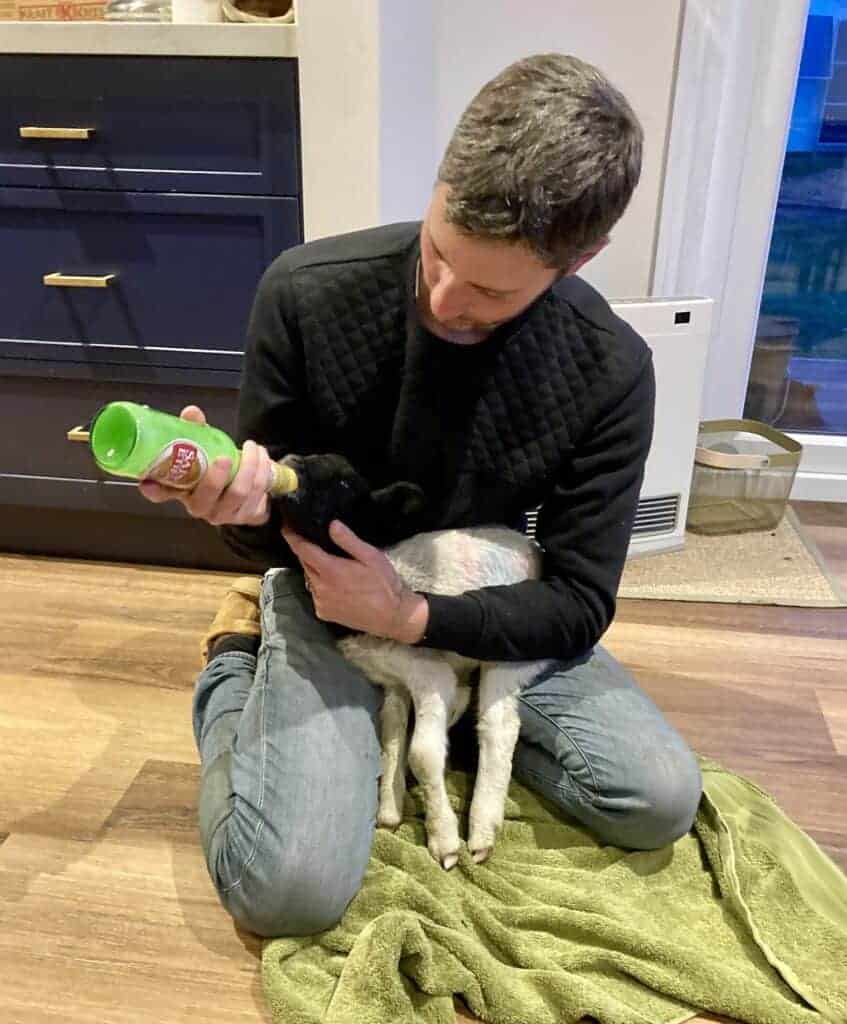
Without access to a ewe and her milk a lamb needs to be bottle fed. Bottles and teats specific for feeding lambs at all ages are available from online agricultural stores or your local farm shop.
As the lambs age it is worth investing in a suitable bottle, but for the immediate week after birth a disinfected beer or glass sauce bottle will work fine.
Teats come in all sorts of varieties, the cheap rubber teats (generally yellow) I find the most economical, versatile and readily accepted by lambs. I always keep a few types on hand as the preference can change from each individual lamb.
9. Feeding Tube
A lamb that, for whatever reason, hasn’t been feeding and as a result is in a weak state where the potential of asphyxiation from bottle feeding is likely will need to be tube fed. Tube feeding lambs comes with risk if done without experience. The tube can easily be inserted incorrectly into the lambs lungs rather than the stomach, which, if fed, will have a fatal consequence.
Have a feeding tube on hand for emergencies but also seek the advice and instruction from an experienced shepherd or vet.
10. Prolapse Harness, Pin or Spoon
One of the more common medical conditions that shepherds need to attend to before, during and after lambing is vaginal prolapse in ewes. Although not likely a situation you will deal with often, it is a condition that needs to be remedied immediately for the health of the ewe.
Although all ewe pregnancy carry some risk of prolapse, the risk is greater in ewe’s that:
- are overweight during the later stages of preganncy
- are carrying multiple lambs
- have given birth to large lambs
- have had their tails docked to short
There are a few prolapse treatment methods available. Each offering a means to hold the prolapsed vagina in place once it has been reinserted. The available equipment is generally cheap and I suggest keeping a few options on hand to work out your preferred treatment method.
Happy Lambing
Now you can stock your lambing kit with these essentials items, alleviating some of the worry that comes with the lambing season.
Share
